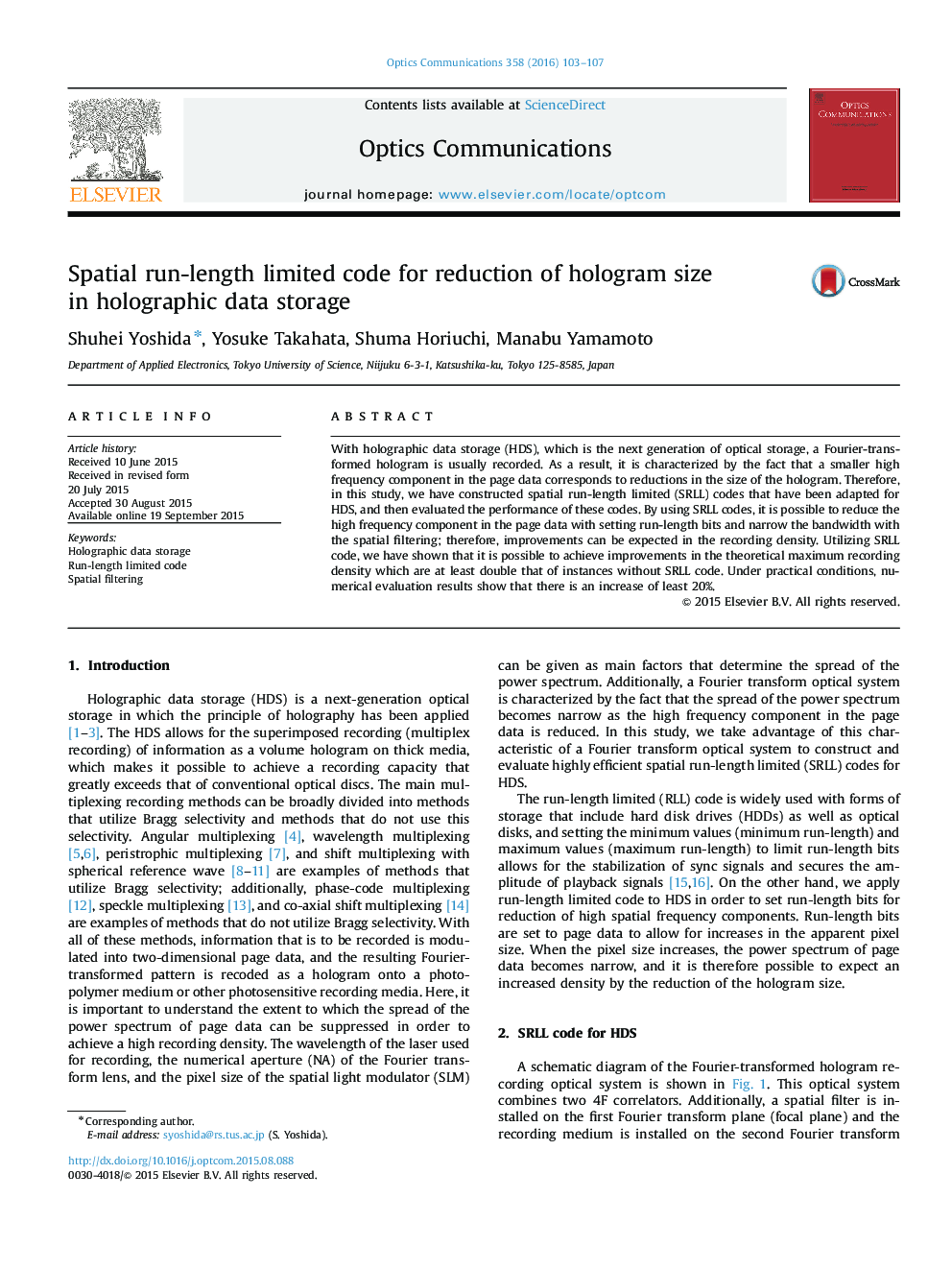| Article ID | Journal | Published Year | Pages | File Type |
|---|---|---|---|---|
| 1533837 | Optics Communications | 2016 | 5 Pages |
Abstract
With holographic data storage (HDS), which is the next generation of optical storage, a Fourier-transformed hologram is usually recorded. As a result, it is characterized by the fact that a smaller high frequency component in the page data corresponds to reductions in the size of the hologram. Therefore, in this study, we have constructed spatial run-length limited (SRLL) codes that have been adapted for HDS, and then evaluated the performance of these codes. By using SRLL codes, it is possible to reduce the high frequency component in the page data with setting run-length bits and narrow the bandwidth with the spatial filtering; therefore, improvements can be expected in the recording density. Utilizing SRLL code, we have shown that it is possible to achieve improvements in the theoretical maximum recording density which are at least double that of instances without SRLL code. Under practical conditions, numerical evaluation results show that there is an increase of least 20%.
Related Topics
Physical Sciences and Engineering
Materials Science
Electronic, Optical and Magnetic Materials
Authors
Shuhei Yoshida, Yosuke Takahata, Shuma Horiuchi, Manabu Yamamoto,
